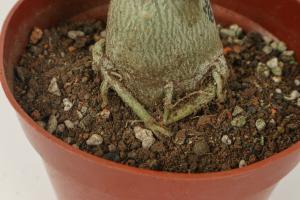Introduction
Snake plant, also known as Sansevieria, is a popular indoor plant that is easy to care for and can last for many years if properly maintained. They are native to Africa and Asia, and are commonly grown for their air-purifying qualities and unique foliage. If you are considering adding a snake plant to your collection, you may be wondering: how long does a snake plant live?
Growth Factors
The lifespan of a snake plant depends on several factors, including the care that it receives, the environment in which it is grown, and the particular species or cultivar. In general, snake plants can live for several years and may even grow to be quite large with proper care. Some species can reach up to six feet in height!
Care Tips
One of the most important factors in ensuring a long life for your snake plant is proper care. These plants prefer bright, indirect light and well-draining soil. They are drought-tolerant and can survive in low humidity, but they do not like to sit in water, so be sure to allow the soil to dry out completely between waterings. Overwatering can cause root rot and eventually kill the plant.
In addition to proper watering, snake plants benefit from occasional fertilization. Use a balanced, all-purpose fertilizer once a month during the growing season (spring and summer) to promote healthy growth. You can also trim off any dead or damaged leaves to keep the plant looking its best.
Pests and Diseases
Another factor that can affect the lifespan of a snake plant is pests and diseases. These plants are generally resistant to most pests, but they can occasionally be affected by spider mites or mealybugs. Keep an eye out for any signs of infestation, such as webbing or white, fluffy spots on the leaves. Treat with an insecticidal soap or horticultural oil if necessary.
Snake plants can also be susceptible to fungal diseases such as root rot or leaf spot. Proper watering and good drainage can help prevent these issues, but if you notice any signs of disease, it is important to act quickly to prevent further spread.
Conclusion
In summary, the lifespan of a snake plant can vary depending on several factors, but with proper care and attention, these plants can live for several years and add beauty and air-purifying benefits to your home or office. If you are considering adding a snake plant to your collection, be sure to provide it with the right environment, including bright, indirect light, well-draining soil, and occasional fertilization. With these tips in mind, your snake plant can thrive and continue to grow for years to come.

 how many times do yo...
how many times do yo... how many planted tre...
how many planted tre... how many pine trees ...
how many pine trees ... how many pecan trees...
how many pecan trees... how many plants comp...
how many plants comp... how many plants can ...
how many plants can ... how many plants and ...
how many plants and ... how many pepper plan...
how many pepper plan...































